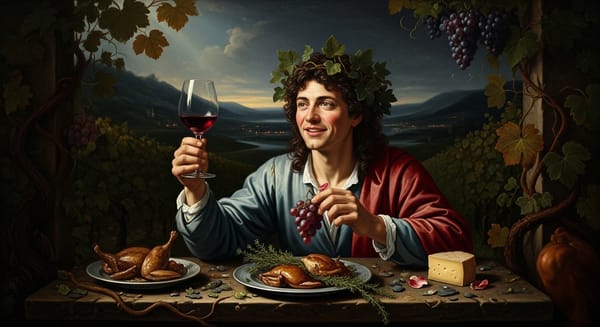The Velvet Anchor: Why Château Palmer 2011 Lets You Sleep While Your Cellar Sprints

A Flavour-Lord’s reality check on a blue-chip Margaux that plays defense, not offense
Think of Palmer 2011 as the velvet anchor in your cellar: it won’t rocket, but it will keep the boat steady while racier bottles pitch and roll.
Every portfolio needs a wine that whispers rather than screams. Château Palmer 2011 obliges with impeccable pedigree yet politely muted upside. Over the past five years it compounded at a modest 1.3 %, even while price volatility pirouetted at a dizzying 74 %. Crucially, its nastiest slide stopped at –18.5 %, a far gentler plunge than most equities managed in the same stretch.
Critics sit comfortably at 92–94 points, and today’s trading band—about $333 to $400 a bottle—matches that verdict almost to the dollar. The forward view is equally calm: analysts pencil in a mild –8.7 % drift over the next three years, signaling sideways rather than skyward movement. Translation? Palmer 2011 is the cellar’s municipal bond—globally trusted, rarely headline-grabbing, quietly resilient.
Liquidity is meaningful but measured. London merchants, New York brokers, Hong Kong apps and Paris auctions all post bids, yet none of them ignite the frenzy that surrounds First Growths or brag-worthy Burgundies. You can exit when you need to, though you won’t spark a bidding war. Roughly 10 000 cases were bottled—scarce enough to stay interesting, abundant enough to avoid stratospheric premiums.
Those solid low-90s scores also keep sommeliers happy. The wine shows up on flagship lists at $600–$900, selling briskly but without the cultish surge that inflates trophy vintages. Back when King Midas begged me to reverse his golden curse, I taught him this: a little dull metal stabilizes the treasury so bright treasures can shine. In portfolio terms, a 5–10 % allocation to Palmer 2011 calms the spreadsheet when trophy bottles swing twenty points overnight.
Executing the play is straightforward. Focus on original-wood-case or ex-château parcels; they earn a 5–10 % premium at auction and move faster when you resell. Keep an eye on the gap between 2011 and halo years like 2009 or 2010. If that spread narrows below about 40 %, consider trading up, because the older giants still have more room to run. Aim bids near $330; dip much lower and supply disappears, climb over $380 and you’re paying a comfort tax. Finally, set a calendar reminder for 2028. By then the wine will be easing into its peak drinking window; if the outlook remains flat, rotate into livelier vintages and let someone else enjoy the velvet anchor in a glass.
Château Palmer 2011 will never headline a Sotheby’s blockbuster, but it will let you sip easy while your growth darlings scrap for alpha. In Bacchus’s lexicon, it’s the calm disciple who keeps the revelry from tipping into chaos. Give it a humble slot, thank it for the stability, and get back to chasing the bottles that make spreadsheets sing.





